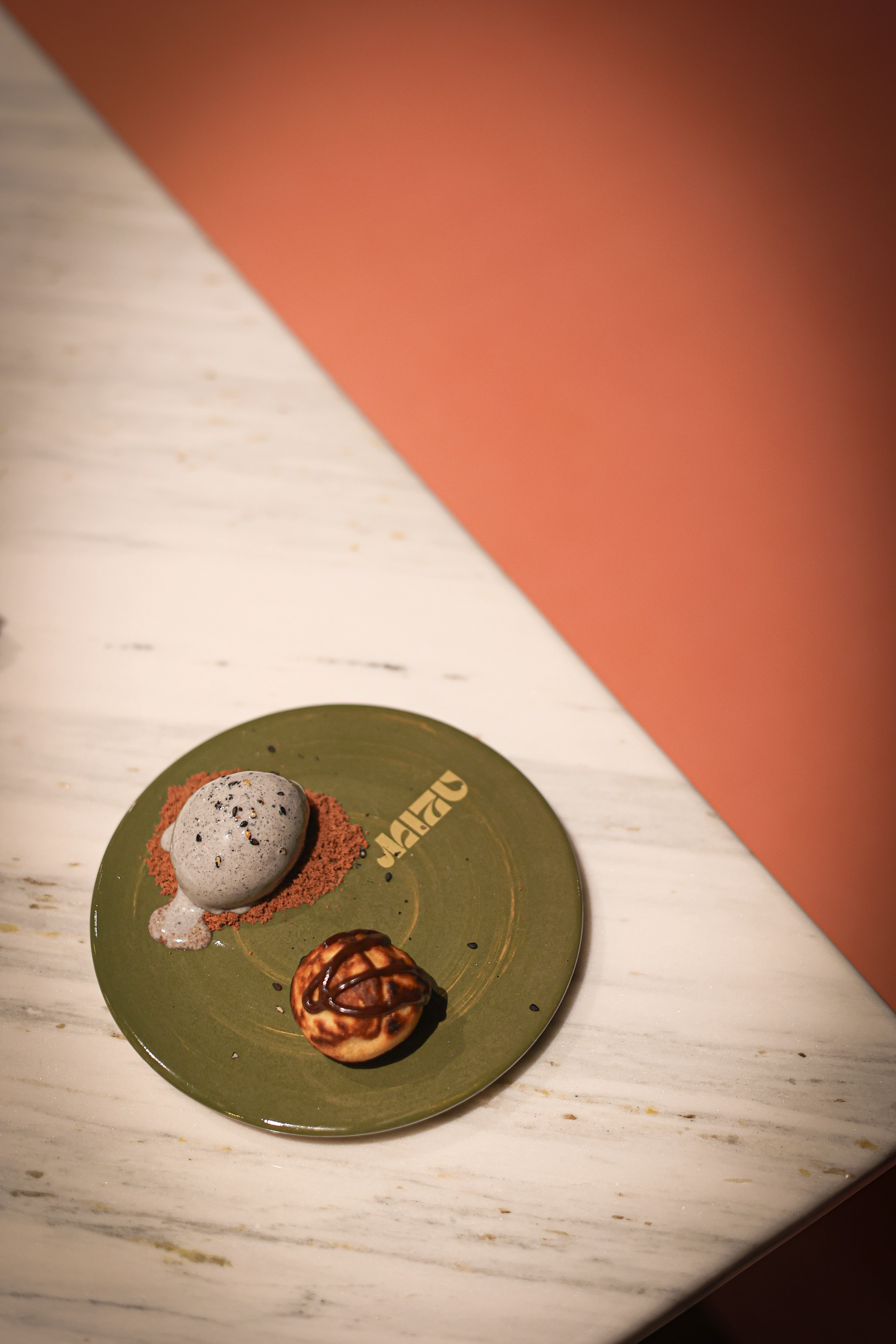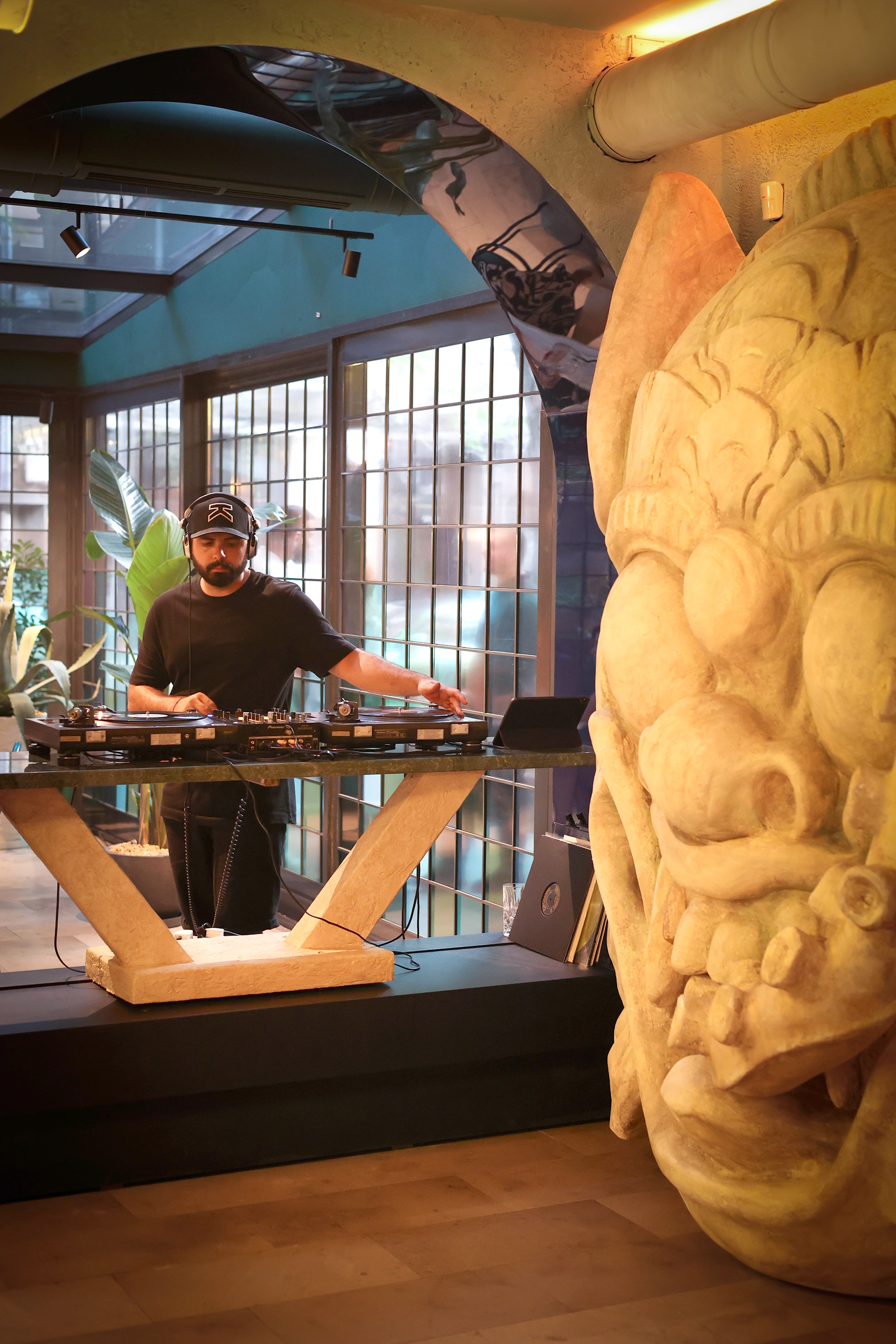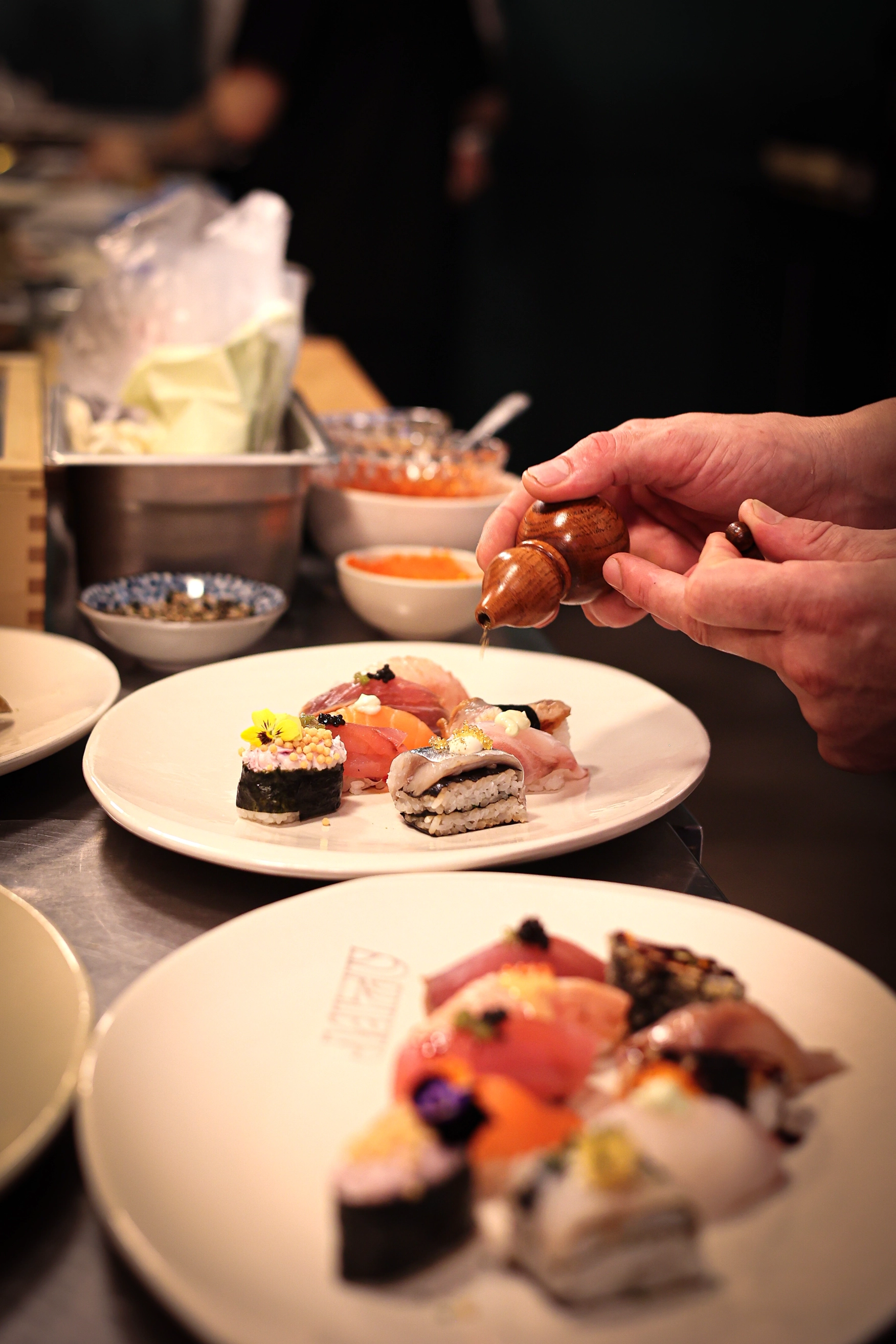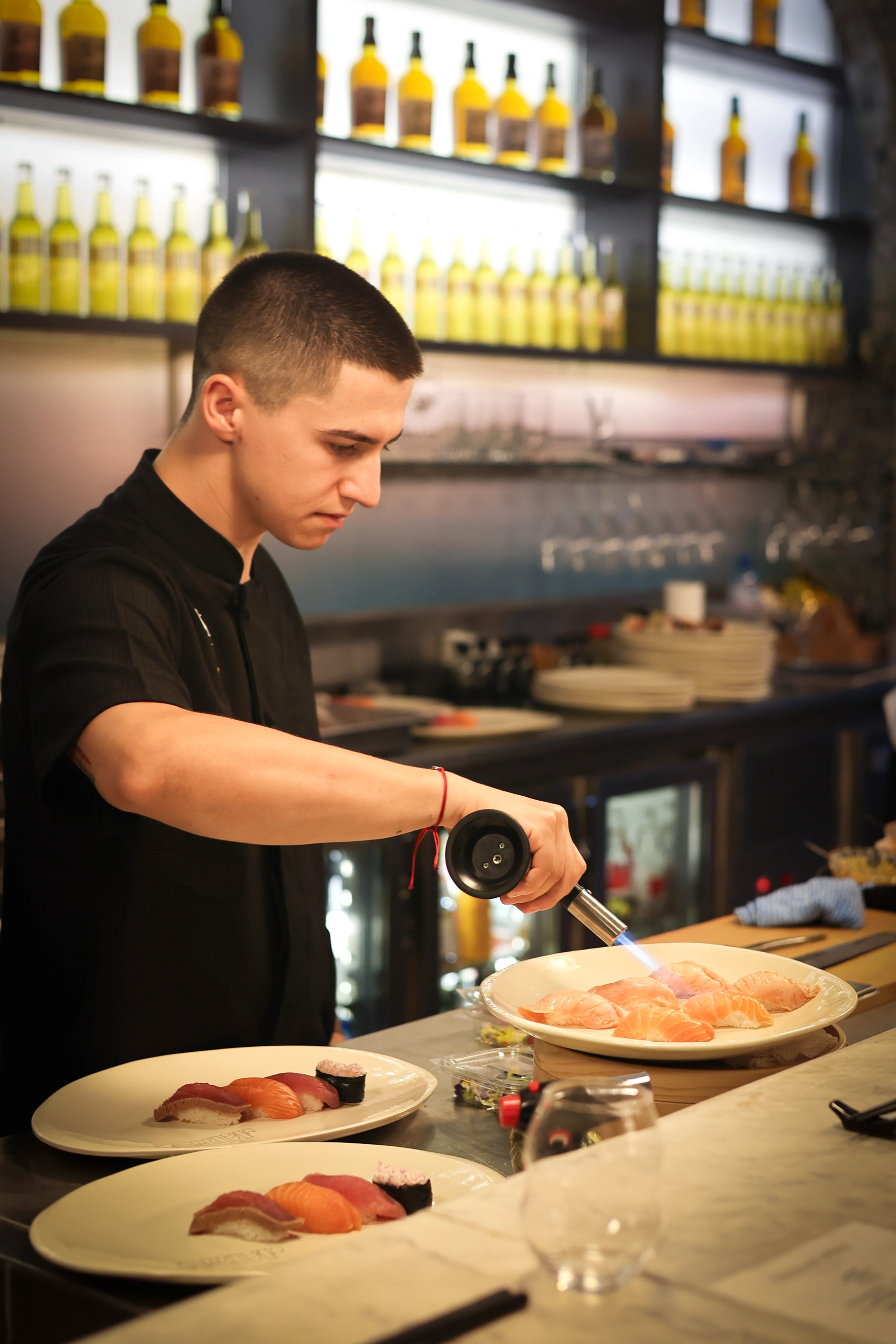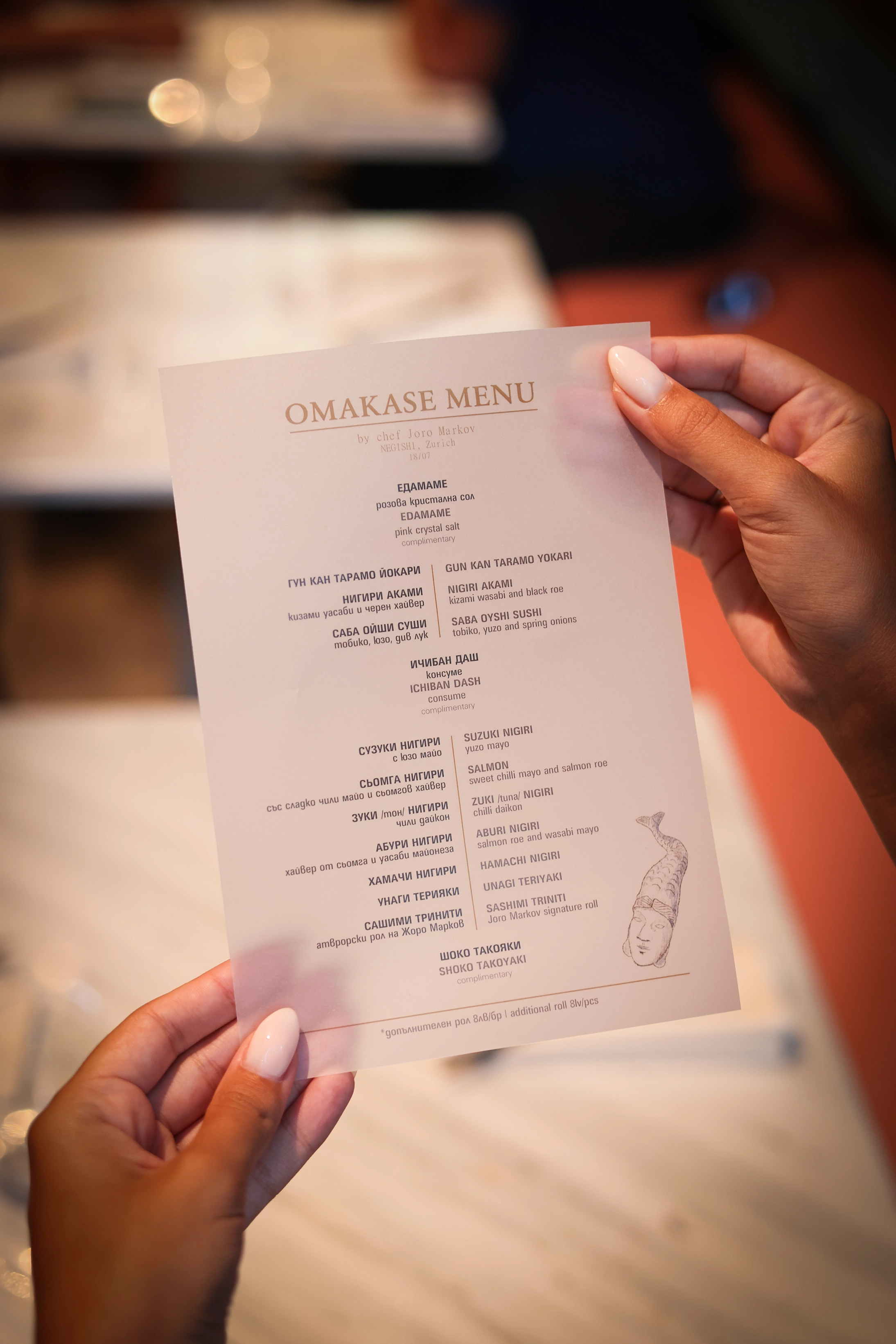For the food that satisfies all the senses - narrated by Petko Tzochev
- Sharena Fabrika
- Aug 13, 2024
- 12 min read
Updated: Mar 12
From the memories of the first Italian pizza to the New York culinary monologues.

Together with his partner, he co-founded the first stationary food truck in the country, and their craft approach to the authentic burger has earned them numerous awards and nominations, such as 'Best Burger Place' and 'Restaurant of the Year' in various categories. Overcoming the challenges of growth and transformation from a small business to a chain with multiple locations across the country, nine years later, Petko Tsochev and Dimitar Dobrev continue to stand out—in their ideas, recipes, approach, interior design, and attitude towards food. For many, they are Street Chefs; for us, they are culinary encyclopedias and the professionals who will lead the teams in Balkan and French cuisine at the future international culinary arts school, whose programs they will develop together with the oldest gastronomy school in Europe — Ferrandi Paris.
Before organizing the kitchens at the Sharena Fabrika, they continue to piece together the missing parts of the puzzle shaping Sofia's culinary map. First came YUM Chinese — a small space for big connoisseurs of Chinese food and New York atmosphere on 'Shishman 24' Street. And just over a month ago, MIZU opened — a place with scale not only in square footage but also in imagination and ideas.
We ask Petko when and how he and Dimitar first stepped into the kitchen, we explore the 'omakase' bar in their new restaurant, and we touch upon some of the challenges in the industry in our country.

How did you get into the kitchen?
My partner and I, you could say, entered the kitchen out of hunger. It was during our student years in the late '90s, and we needed to eat. We had an inherent respect for food—what you eat and how you eat.
Does this come from your family in your case?
For him, yes. Dimitar's father had a very serious attitude toward food. He attended cooking courses, collected magazines, and then gave them to us. On my side of the family, both of my grandmothers cooked a lot. At home, my mother cooked to feed us since we were three brothers. There wasn't a cult of food or slow eating. Generally, there wasn't a cult around the dinner table. The only requirement was to have dinner on time and together.
That in itself instills a certain attitude and culture toward food.
Yes. Later, Dimitar and I started with how to make chicken livers or chicken hearts. How to prepare drob sarma... things that were a bit unconventional. That's how it all began. We lived next to each other and would take turns, "Tonight we're at your place, next time at mine," and with that came a large group of friends who tagged us as the ones who cooked. I also remember the first magazines I started buying — Bacchus and Salt & Pepper. If I dig through my house, I might still find them.
Certainly, practice is the best way to learn, but how did you accumulate culinary knowledge back then?
Traveling, definitely. There was no internet, and magazines were scarce, so they were very valuable. You'd see a picture and wonder how to make it as close as possible to the one in the picture. I remember Salt & Pepper and Bacchus very clearly as media that featured interesting things because they had more unconventional dishes. I also recall earlier times when I was in Moscow. We lived in a diplomatic compound with three fenced blocks, only for foreigners. Some of my best friends were an Italian family from the neighboring block. Two sisters and a brother—Federica, Raffaella, and Emiliano. They lived on the seventh floor in the block, right in the middle of the entire courtyard. In the evening, while we played, their mother would come out on the balcony and start calling, "Fede, Raffi, Emi..." We would all stop, look up, and she would wave her hand, shouting "mangiare," and they would go home. One evening, they invited me to eat pizza. Our idea of pizza back then was thick dough, a kind of pita bread with sausages and ketchup. But she had made a thin, delicate pizza. We ate everything and were still hungry. I was very disappointed. I thought, "These Italians don't know how to make pizza." Their mother still cooks phenomenally to this day.
Did you stay in touch over the years?
Yes, years later, I was traveling to Africa, and my flight was passing through Milan. They live in a small village in Alto Adige, a very beautiful wine region. It was my first time passing through Italy, and I had one night in Milan. I called Fede a week in advance to tell her when I'd be there, and she came. In the evening, she asked me where I wanted to have dinner. "Well, where else?! It's my first time in Italy; take me to eat pizza." And she said, "Great, I know a very good place for pizza here." And she took me to a Chinese restaurant. "How could you bring me to a Chinese restaurant to eat pizza?!" But she said, "They make really good pizza here." I was in complete shock. Over the years, I met up with their whole family again after Fede moved to New York, but by chance, we were both in Italy. When I called her, she said, "We're here with my brother, my sister, everyone. Stop by for lunch." Their house is surrounded by vineyards, but it’s like a canyon—cliffs on all sides. And below, vineyards. I asked how the grapes grow there with all that sunlight, and they explained how the sun reflects off one slope onto the vineyard, both before and after noon, as if there are mirrors on both sides. They harvest the grapes, give them to the local winery, and they get it back as finished wine in a bottle. As soon as I walked in, their mother had set polenta on a machine to stir while she told me how she had gone to the forest that morning to gather mushrooms. Their father opened the wine, and their mother pulled out homemade Gorgonzola with a nice mold, mixed it with the polenta and mushrooms. Now that's tradition. And now that these memories have been triggered, I realize that through that family, I've had some foundational culinary experiences. And there are probably many more like them.
Speaking of culinary experiences, in light of your stories and your recent trip to Japan, would you say that the dining experience has changed for customers? How has the experience of sitting down in a restaurant evolved?
I am generally a bit reserved about what's happening in the culinary world right now. Yes, we are in this industry, and to some extent, it benefits us—the fact that there's a sort of cult around chefs—but because of that, people sometimes forget that the purpose of food is to satisfy hunger. The other side of food, as seen through the eyes of the inhabitants of the so-called olive belt—all of Southern Europe—is that it’s a reason for socializing. Which, for example, is lacking in northern countries.
In terms of spectacle, yes. I was recently in New York at a very interesting place, a kind of 'omakase' restaurant where you sit around the bar. There were 16 of us, and the chef cooks step by step for the guests. It's a Japanese restaurant where the entire menu is based on yakitori—chicken skewers. When I made the reservation, they checked my email and saw that we were in the industry. They wrote to us specifically to say how happy they were that colleagues would be visiting them. They seated us in spots where we could see the head chef working, and we had the chance to enjoy the show from the front row. He had taken 17 different kinds of 'scraps' from one chicken, so to speak. He didn't treat the chicken as legs, breasts... but looked at it differently—which little muscle with which cartilage should be in a single bite so that when you take a bite, everything is different. It was dark, with the focus entirely on him and his grill. It was like a one-man show in a small, intimate theater. But the food was super simple, with nothing superfluous. The art was in shaping the particular skewer.
Typical of Japanese style — very minimalist, with two kinds of spices they give you. At the start, they tell you — this is spicy, this isn't spicy, this is for the lighter parts of the meat, and this is for the darker parts. When he started cooking, he put on some old-school hip-hop music and began to dance, while moving the skewers here and there, on two fingers. The team introduced us to him, saying, 'These are the guests from Bulgaria.' He came over and was very respectful. I told him I was impressed and would love for him to come to Bulgaria, and we could do similar evenings. I had just one question: 'Why do you keep lifting those skewers non-stop?' He replied, 'On those two fingers, I know exactly how much the raw skewer weighs.' That was it. Honestly, it's hard to impress me anymore after so much focus on food in my life, but this one-man show was impressive.
Is this the future of restaurants? Is this the added value? The story, the show?
Well, this so-called show-cooking definitely brings a lot of added value to this business. This is the stage we should be watching. For me personally, if there should be a show, the added value lies in cooking in front of people so they can see the process of preparing the food.


MIZU, Sofia, ® CreatiVD
Is this the concept here at MIZU?
Yes, absolutely. Here, we have two stages for this type of cooking, and we want to do similar things. One is the Japanese grill "robata," and the other is the so-called "Omakase" bar.
In a way, you'll be pioneers again because Street Chefs was also a novelty at the time in our country.
Yes, we were even a bit worried at first with Street Chefs because the concept of an expensive burger wasn't popular at all back then. Street Chefs was the stepping stone that allowed us to dive deeper into the culinary world as a business. You need to know some foundational things in the chain—supplies, food production—to be able to distinguish the good from the bad, the quality from the subpar. From day one, we haven't compromised on quality. If something needed improvement, we did it. All the preparations—caramelized onions, pickles, etc.—everything is made by us, now in the new kitchen. Everything is still done by hand. And the recipes are kept intact. If something dries out faster somewhere, we raise the alarm. Yes, I see social media, I read the comments, but many people don't understand the process. There’s also the human factor, and that's not a quality issue but a staffing issue, which is inevitable. Once you become a chain, this problem becomes unavoidable.
Will the "Sharena Fabrika" project, where you'll be leading the Balkan and French cuisine section, help address this problem? How do you see this format evolving and changing perceptions of restaurant professions?
It's a complex issue because there are historical accumulations in this industry dating back to the socialist era. It's hard for me to go back in time as I wasn't a direct witness to those processes, but there's a stigma that originated then. Here, the perception of being a waiter is often "I'm doing this for a short time." The same goes for chefs, although that's starting to change. If you walk around Greece, Turkey, Serbia, or even Macedonia, most of the waitstaff are older people who have been doing this for years and have no intention of quitting as long as they can still work. This is a craft, a respected profession, often tied to family businesses. But it’s a profession. They respect themselves. They dress in white shirts, ties, and are well-groomed. So, the stigma that has developed here in this industry is hard to erase. I find it difficult to see it changing at this stage. Schools like ours, hopefully, will foster such respect for the profession. At the very least, every course starts with a hygiene course, which is crucial. One of the main problems with some chefs in Bulgaria is the lack of hygiene, basic knowledge of hygiene.
Is this a lack of personal responsibility to maintain the workplace or a lack of resources for proper upkeep?
Upbringing is always a factor. But when it's not required, no one follows it. There is a self-control system, but it's just a document. No one applies it as it should be applied.
What are the biggest challenges in this industry? Is the human factor the most important, the biggest problem?
The human factor is definitely number one. You can build the most beautiful thing, and someone behind you can ruin it while smiling and talking to you. I mean people from the team. So that's a big problem. Another, although it seems minor, is that there are no suitable spaces for restaurants. Here at MIZU, the space is an exception and is nice because it was once designed as a cafeteria for Sofia Press, and it’s fundamentally different. It has space and lends itself to making a restaurant.
Is this the concept here at MIZU?

Yes, absolutely. Here, we have two stages for this type of cooking, and we want to do similar things. One is the Japanese grill "robata," and the other is the so-called "Omakase" bar.
In a way, you'll be pioneers again because Street Chefs was also a novelty at the time in our country.
Yes, we were even a bit worried at first with Street Chefs because the concept of an expensive burger wasn't popular at all back then. Street Chefs was the stepping stone that allowed us to dive deeper into the culinary world as a business. You need to know some foundational things in the chain—supplies, food production—to be able to distinguish the good from the bad, the quality from the subpar. From day one, we haven't compromised on quality. If something needed improvement, we did it. All the preparations—caramelized onions, pickles, etc.—everything is made by us, now in the new kitchen. Everything is still done by hand. And the recipes are kept intact. If something dries out faster somewhere, we raise the alarm. Yes, I see social media, I read the comments, but many people don't understand the process. There’s also the human factor, and that's not a quality issue but a staffing issue, which is inevitable. Once you become a chain, this problem becomes unavoidable.

Will the "Sharena Fabrika" project, where you'll be leading the Balkan and French cuisine section, help address this problem? How do you see this format evolving and changing perceptions of restaurant professions?
It's a complex issue because there are historical accumulations in this industry dating back to the socialist era. It's hard for me to go back in time as I wasn't a direct witness to those processes, but there's a stigma that originated then. Here, the perception of being a waiter is often "I'm doing this for a short time." The same goes for chefs, although that's starting to change. If you walk around Greece, Turkey, Serbia, or even Macedonia, most of the waitstaff are older people who have been doing this for years and have no intention of quitting as long as they can still work. This is a craft, a respected profession, often tied to family businesses. But it’s a profession. They respect themselves. They dress in white shirts, ties, and are well-groomed. So, the stigma that has developed here in this industry is hard to erase. I find it difficult to see it changing at this stage. Schools like ours, hopefully, will foster such respect for the profession. At the very least, every course starts with a hygiene course, which is crucial. One of the main problems with some chefs in Bulgaria is the lack of hygiene, basic knowledge of hygiene.


Is there potential for our cuisine to modernize its presentation similarly?
We have the prerequisites, but it would be difficult to stand out against the backdrop of Balkan cuisine. Much of our cuisine is borrowed from Turkish and Greek cuisines. It would be hard to showcase something authentically ours. But this is where something else comes in, which we talked about earlier: besides the added value of cooking in front of people, the other key element is the quality of the ingredients. If we can emphasize something, it’s the products because we have clean nature. We have various spices that we probably don’t even fully know how to use. The uniqueness of Bulgarian cuisine, in my opinion, should come from the products themselves. For example, in southern Italy, bottarga — dried roe — is very popular. It's usually made from mullet, the most common fish there. The roe is heavily coated with olive oil and salt and left to dry, being salted again. It resembles a kind of pastrami. I do the same on our sea coast but with turbot roe. Most people throw it away when they find it in the fish. Bottarga is grated onto salads, pasta, and risotto. It has a very strong sea flavor. But that’s just one example. Or take the same turbot baked in the oven. I personally only like it that way. I have a recipe I learned from Uti Bachvarov, who learned it from Misho Zaimov.
Why did you decide to open a Chinese restaurant?
Because there wasn't one. And practice proved it. Yes, it’s small, but it’s always full. Again, the cooking process is visible. We solved two issues that bothered me: seeing who and how your food is being prepared and having an atmosphere with an unconventional interior. Here at MIZU, the question was much more serious. I don’t like the word "fusion" in cuisine, and here we really wanted the foundation, the backbone, to be based on authentic Asian recipes. Robata grilling is an entire science in Japan. It can be used for different kinds of meat, vegetables, fish, and seafood. The other stage is the "omakase" bar. We’ve already had two "omakase" dinners with Chef Zheko Markov, who was in Bulgaria for a short time. He prepared a 10-course nigiri menu with very clean, traditional flavors and techniques.
I assume there will be guest chefs as well.
Oh yes, that's the idea. It's very difficult to find a chef who can deliver this type of "omakase" evening in a well-structured way. But it turned out really well. This is what we will strive to do going forward—whether it's sushi or ceviche, the important thing is that everything happens in front of the guests, with the Japanese element of raw fish always present in the menu. These are two concepts that are currently missing in Sofia.

Photos: CreatiVD


